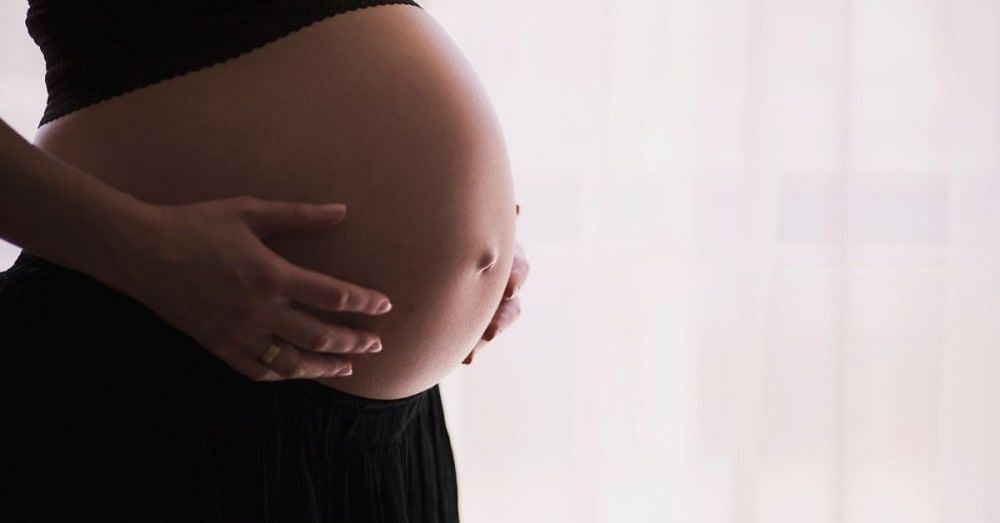Circumvallate Placenta Definition
Circumvallate placenta is a medical condition that leads to changes in placenta morphology. The chronic plate's size reduces due to lack of nutrition. As a result, it doubles back around the edges of the placenta and on the foetal side.
Circummarginate placenta is another condition similar to the circumvallate placenta that results in changed placenta morphology and causes pregnancy-related complications.
Signs and Symptoms of Circumvallate Placenta
Here are some signs of the circumvallate placenta:
- Retarded Foetus Growth: Growth of the foetus inside the womb gets abnormally slow if the mother has a circumvallate placenta. This is because blood and nutrients supply reduces. However, other factors too could affect the foetus growth. Doctors do an ultrasound to figure out whether the cause is circumvallate placenta or something else.
- Vaginal Bleeding: Vaginal bleeding during the first trimester can be another circumvallate placenta symptom. Yet, it is not a confirmed symptom, and a pregnant woman may or may not experience this if they have a circumvallate placenta.
- Premature Rupture Of Membrane (PROM): Amniotic sac might rupture prematurely if a pregnant woman has a circumvallate placenta. This is known as Premature Rupture Of Membrane (PROM). If it ruptures before 37 weeks of gestation, the condition is known as Preterm Premature Rupture of Membrane (PPROM).
Also Read: Double (Dual) Marker Test: Procedure, Cost, Results, Pregnancy, More
How Does Circumvallate Placenta Affect Pregnancy and Birth?
Some ways in which circumvallate placenta impacts pregnancy:
- Underweight newborn baby: Circumvallate placenta slows down the growth of foetus due to restricted nutrition. Hence babies are born with abnormally low weight.
- Rupture In Placenta: Sometimes, the circumvallate placenta breaks away from the uterus lining prematurely. This is dangerous for a pregnant woman's life because it may cause significant bleeding.
- Reduction In Amniotic Fluid: This fluid provides a cushion to the baby and helps develop some vital organs like lungs, muscles and bone. It also keeps the umbilical cord intact to ensure a proper supply of nutrition to the foetus. When amniotic fluid decreases, the baby's growth gets severely affected. This condition is also termed oligohydramnios.
- Premature Birth And Miscarriage: Above mentioned conditions could turn fatal and cause the death of a foetus if not treated on time. Thus circumvallate placenta and delivery of baby are indirectly related.
Causes of Circumvallate Placenta
The exact cause of the circumvallate placenta is still unknown. Research is going on to figure out how to prevent it. However, as of now, nothing can be done to avoid circumvallate the placenta during pregnancy. This condition is rare and happens in only 1-2% of cases.
Also Read: Triple Marker Test: Procedure, Cost, Results, Pregnancy, More
Circumvallate Placenta Diagnosis
So far, no confirmed diagnosis of circumvallate placenta exists. Doctors may spot it during routine ultrasound checkups of pregnant women, but that doesn't happen quite often. Treatments are recommended based on the signs and symptoms like the slow growth of the foetus.
Usually, doctors determine whether or not the woman has a circumvallate placenta only after the baby is born and the placenta is ejected from the uterus.
How Is Circumvallate Placenta Treated?
Since circumvallate placenta cannot be diagnosed easily, there is no definitive treatment for it. Even if the doctors manage to identify the condition during pregnancy, they take measures to prevent further complications.
Some ways in which doctors try to manage circumvallate placenta complications during pregnancy are:
- Ensuring Proper Foetal Growth: One of the serious complications of circumvallate placenta is restricted intrauterine growth as the umbilical cord shrinks. In such cases, doctors monitor foetal growth more frequently and suggest a balanced diet full of nutrients to pregnant mothers. Such mothers are asked to adopt a healthier lifestyle.
- Managing Premature Placenta Rupture: If it happens, doctors may give you IV fluids to increase your blood pressure and prevent too much blood loss. Pregnant women are advised to complete bed rest if their due date is far away.
However, if the blood loss is severe, doctors may have to deliver the baby prematurely. Emergency C-sections might also be conducted to save the life of both mother and the baby.
- Treating Oligohydramnios: Women having oligohydramnios or reduced amniotic sac are given extra attention. Doctors may conduct a procedure known as "Amnioinfusion" in which the amniotic sac is replaced with other fluid. This reduces the risk of umbilical cord shrinking and underdevelopment of the foetus's body organs like lungs, bones, muscles, etc.
Can Circumvallate Placenta Resolve?
No, the circumvallate placenta cannot be resolved or treated. Doctors only try to manage its symptoms to avoid pregnancy-related complications.












